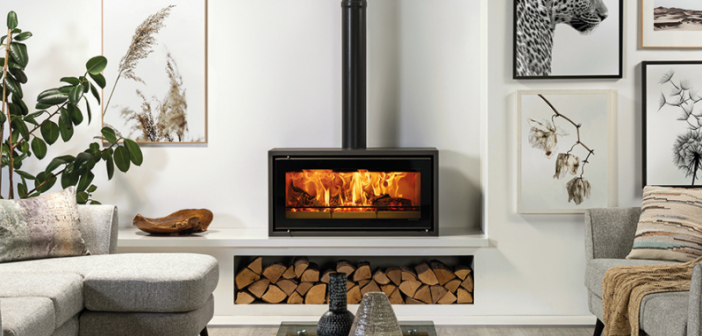As we start to prepare for the cooler months, we naturally start to think about getting our homes cosy for winter.
Now is the perfect time to start reassessing your heating needs for the chilly months ahead. A multi fuel stove is the perfect choice for any interior, offering instant warmth and a cosy feel that also provides an eye-catching focal point within living rooms and open-plan spaces.
We’ve researched some of the best wood burning gas and electric stoves, as well as some designer radiators on the market.
Wood Burning Stoves
Although wood as a fuel could be considered environmentally friendly, a stove still emits a level of pollution. This is particularly the case if you burn polluting fuels such as wet wood or house coal. If you are concerned about the effect of pollution on the environment, you might want to think twice. If you decide against a stove but still want the look and feel of one, consider a gas or electric stove?
For the most cost-effective way to use a wood burning stove, you’ll need plenty of room to store your logs. Roughly speaking, if you have an average sized stove, you could use about 1 to 1.25 tonnes of wood a year. TOP TIP: Buying your logs in bulk is cheapest.
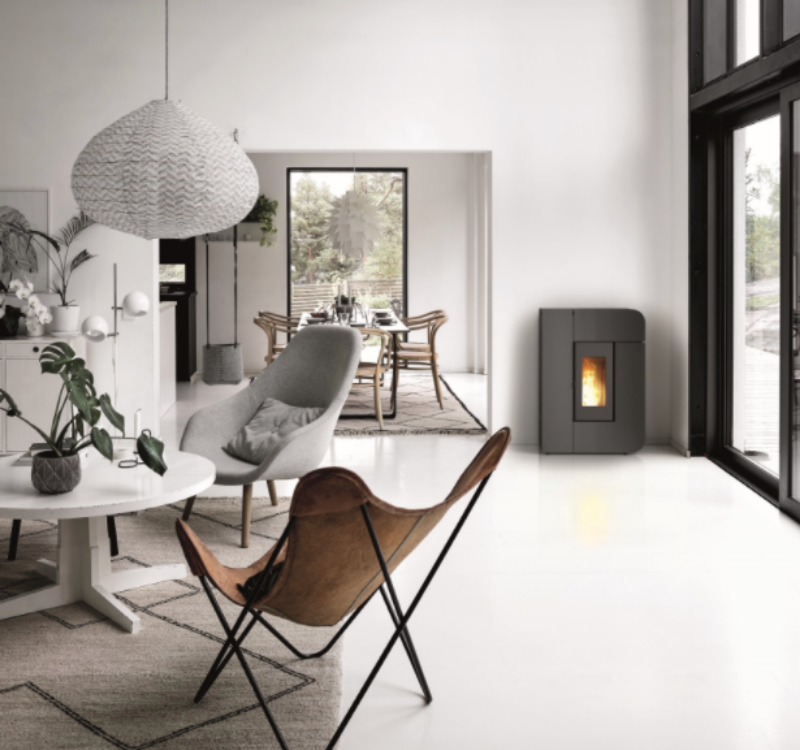
The MCZ Alea Pellet Stove. From €1,870 + vat. mcz.it
Stoves are generally used to heat just one room, but you can attach it to your central heating system to heat other parts of the home too.
How much maintenance is needed? Keep in mind that stoves can take time to light, they need to be controlled effectively and some need the ash cleaned out every time you start the fire. It’s also worth noting that you will need to get the chimney swept at least once, preferably twice a year, and pellet stoves will need to be services once. year as well.
Every home and installation is different, there are a number of factors that affect which stove works for yo. From the size of your home to what chimney you have.
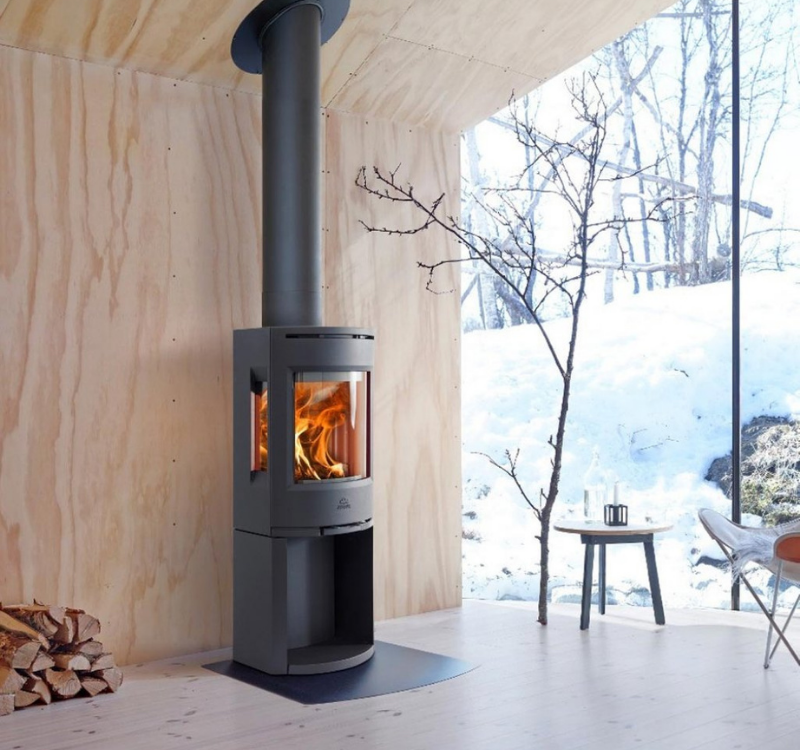
Free standing Jøtul F135. From £1989. jotul.co.uk
A key part to choosing the right stove for your home is getting the right size and heat output. The size you need can be affected by:
- The size of the room (you’ll need to measure the height, width and length)
- The layout of the room and your home (for example is your space open-plan?)
- The size of the windows and whether you have double glazing, if the room has insulation of any kind, such as wall or cavity and the age of the property
Gas Stoves
A gas stove requires minimal maintenance and doesn’t need a chimney, meaning it can be installed in virtually any property, from a new apartment to a period, providing a flue can be fitted.
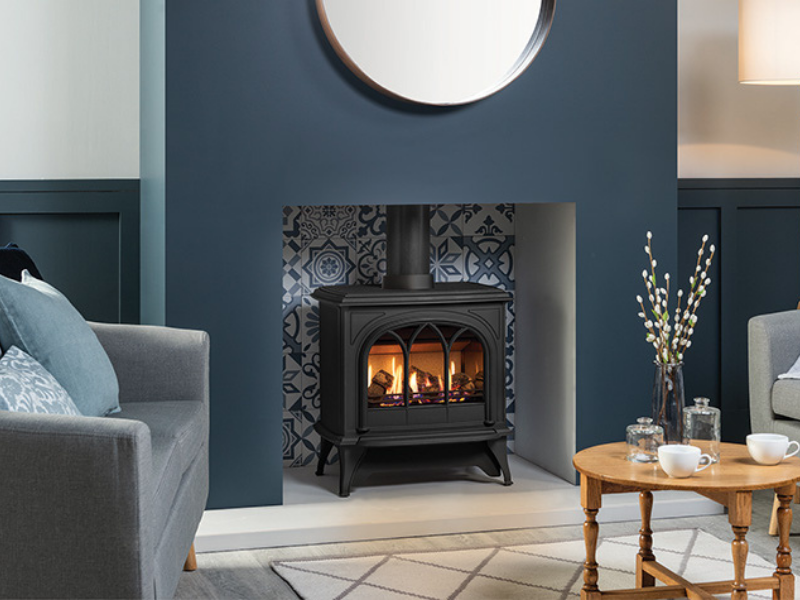
Huntingdon 40 gas stove with Tracery Door, from Gazco. from £1,959, stovax.com
A gas stove provides constant heat without the need to replenish firewood and the temperature control makes them perfect for use all year round. Most can be operated manually, by remote control or via a smart device such as a smartphone or tablet.
Electric Stoves
If you enjoy the look of a fireplace and wish you could enjoy the flow of a fire all year round, then an electric fire is the answer. An electric stove can be sited almost anywhere in the home and as electricity is increasingly produced from renewable sources, it’s perfect for those looking to minimise their impact on the environment.
Jack Drew, Electrical Development Engineer at Gazco tells us more about the benefits of an electric stove.
‘A new build home tends not to offer a chimney as part of the standard build, and while it is possible to fit on retrospectively, many homeowners choose to opt for an electric stove for complete ease of installation. Only requiring simple connection to the mains, an electric appliance is ideal for a new build especially as many homes are tightly air sealed and energy efficient, so have little need for additional heating. An electric stove can be used with or without the heat, and most can be controlled at the touch of a button. Some even offer energy-saving features such as Open Window Detection, which allows them to detect a drop of temperature caused by that of an open door or window, and subsequently switch off their heating functions to save energy.’
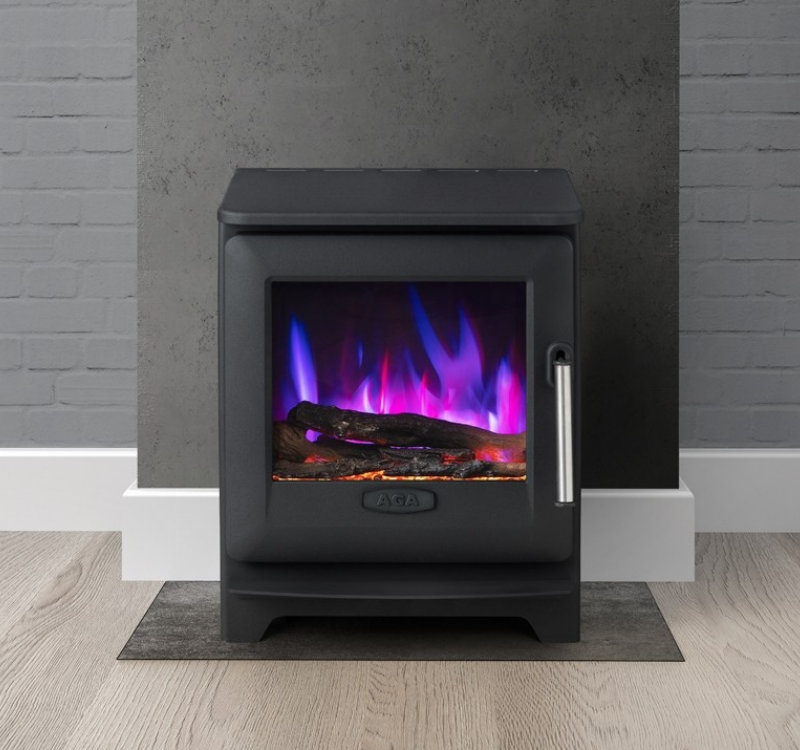
AGA Ludlow electric stove. £1,225. agaliving.com
A gas stove, however, has lower running costs and higher heat output than electric. Gas is environmentally friendly as it burns more cleanly than other fossil fuels and offers the best of both worlds – real flames with convenience.
Radiators
Cutting edge designer radiators make an eye-catching statement anywhere in the home and many radiators are now used as a design feature within a room. Their key function is to ensure the home is kept snug and warm in the most cost effective way – radiators should offer high heat output at a minimum cost.
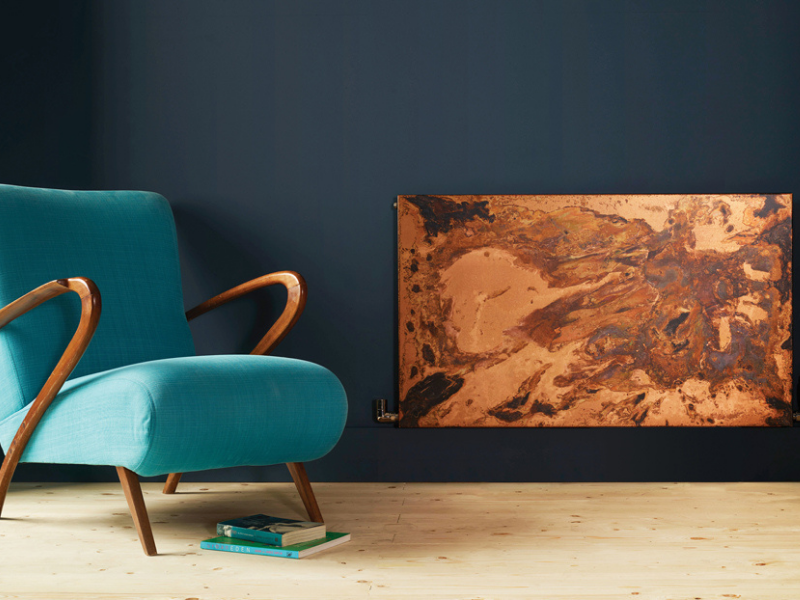
Bisque Arteplano radiator in Etched Copper. From, £1658. bisque.co.uk
When looking to put in a new radiators, it’s not just the capacity of the radiator, there are other elements to consider.
- A radiator with suitable capacity
Every room in your home has a specific ideal temperature for maximum efficiency. When calculating the heat you’ll need to consider the volume of the room; the desire temperature and the function of the room – do you sleep there or will you be actively working on it?
- Consider insulation
The extent to which your home is insulated also has a huge impact on the required radiator capacity. If the property is a new build or has been recently refurbished with full insulation, then your heating capacity can be significantly lower – older properties need greater heating output.
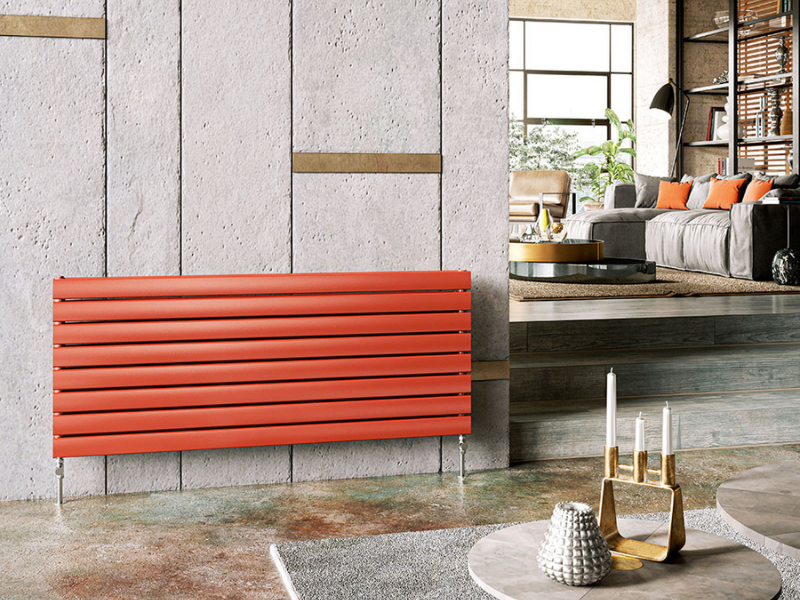
Tornado horizontal radiator in Salmon Orange from DG Heating. From £293 for white and £381 for a RAL colour. dqheating.co.uk
- How to increase heat output
For optimum heat output do not hang towels or clothes over your radiator to dry. However, for your bathroom or utility area you can select a special thermostatic radiator that you can also use as a drying rack. Don’t use built-in radiators or radiator casing. The design is made to be seen – there’s no need to hide or tuck them away. Finally, be sure to bleed your radiator system regularly.
Set Featured Image Credit – Studio 2 Ecodesign freestanding stove, from Stovax. From £2,815. stovax.com


